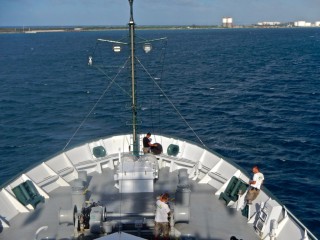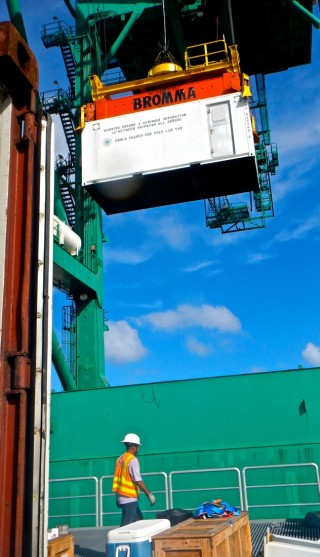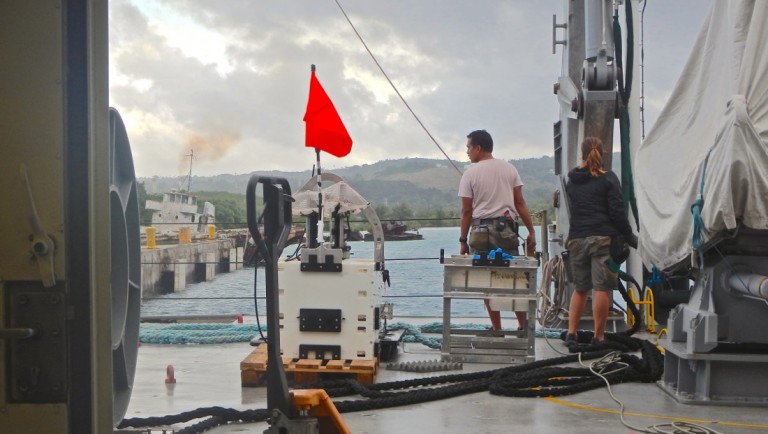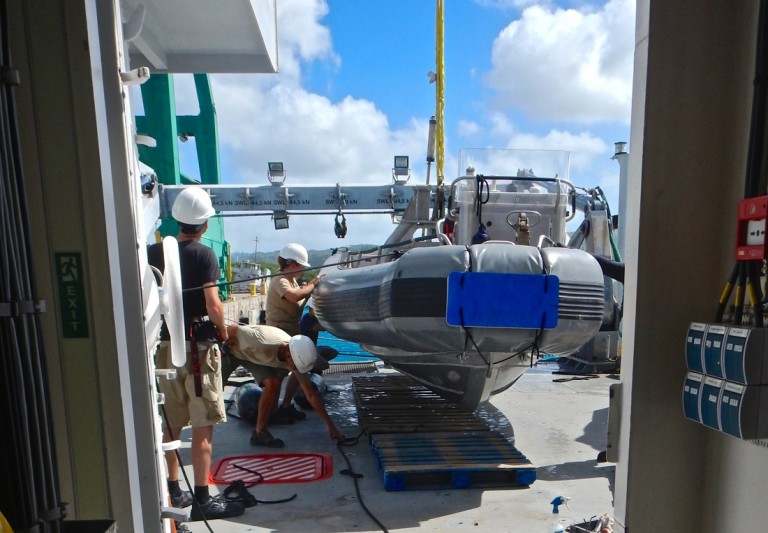All too soon, the R/V Falkor is again docked in the crystal blue waters of Guam harbor. It seems like weeks have gone by since we were last here, but in reality it has taken only a few short days to return to our point of disembarkation. In the time between I learned not only how much skill is necessary to safely and successfully deploy landers, but also how much luck, prayer, and top-notch engineering it takes to get them back.


At times rough weather made it unsafe to deploy any oceanographic equipment at all, and the weather ultimately led us ashore one day ahead of schedule. We’re sad to be back so soon, but happy for the calm and sunshine.
Not Done Yet
But even ashore, the work is far from over. The bulk of the data analysis and processing will happen at our various home institutions, and it won’t be short work. A single small seawater sample could keep a microbiologist happily occupied for years—that is, if we pack it carefully enough that it stays cool and protected for the journey home.
Our first day back, we’ve scoured the wetlab, engineering center, and cold room, leaving no evidence that we had even been there. A massive crane fished the entire cold van laboratory compartment straight off of the Falkor’s top deck and plopped it onto shore with the ease of an arcades-man hoisting a teddy bear from a $0.25 machine.
Personally, having been trapped in its cramped, frigid, drippy interior on more than one occasion, I was happy to see it—and it’s persistently uncooperative door handle—on its way out. We also filled an entire shipping container with almost 4,000 pounds of oceanographic and lab equipment, with each item stowed in its proper box and appraised for customs records.
Rewards
Though there is much work ahead, great science has already come out of this immense investment. The Leggo lander made it to the deepest part of the ocean on its very first trip out of the lab, and continued to boomerang faithfully back to us on every deployment that followed.

After years of troubleshooting, Logan and Matt set a world record for the deepest microbes ever collected and maintained at their natural pressure environment. Their pressure retaining samplers, mounted on Leggo, will finally elucidate whether the depressurized communities that have been the only samples researchers had to work with are actually representative of a real-life deep trench environment.

Additionally, we came back with beautiful new evidence of the macrofaunal life that exists at the most extreme pressures on Earth. Our crystal-clear footage shows swarms of pink amphipods scurrying gracefully about our baited trap, as if unaware of the nearly 16,000 pounds per square inch of pressure bearing down on them from above, a testament to the unrelenting force of evolution.
Even from the ashes of landers lost comes great science. In its dying moments, the sound of Deep Sound III’s implosion gave us the first insights on the behavior of sound in a hadal environment. Its final, dramatic crescendo would be the deepest implosion ever recorded.
Our time at sea has been short and strained, but unfailingly productive against all odds. That’s thanks to the skill and happy determination of the crew and science party involved on this mission. More than anything, I’m grateful to have met each and every one of them.

